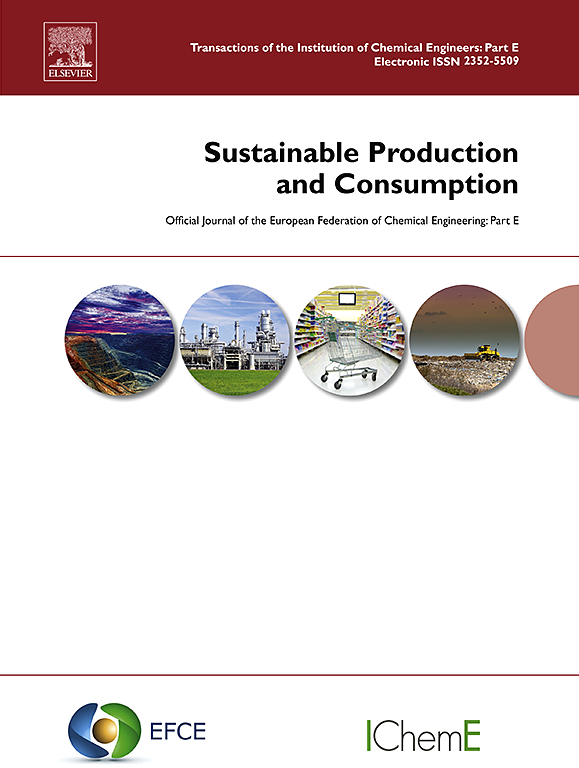Circles of profit: A conceptual framework for economic and financial aspects in circular construction
IF 9.6
1区 环境科学与生态学
Q1 ENVIRONMENTAL STUDIES
引用次数: 0
Abstract
Circular construction is an emerging paradigm aimed at addressing the sustainability concerns related to the construction industry. While technical and environmental aspects of circular construction receive ample attention, their economic dimension remains underexplored and is often limited to costs and micro-level factors, lacking a holistic perspective. In response, this study develops a multi-level conceptual framework to critically evaluate the economic and financial aspects of circular construction, through an Integrated Literature Review (ILR) of 45 academic and grey literature sources, complemented by interview data from actors involved in real-world circular construction projects. Four primary research clusters of economic and financial aspects are identified: (1) economic assessment methods, (2) benefits, barriers, risks, and enablers, (3) market guidelines and reports, and (4) circular business models. The findings reveal that economic and financial aspects are complex, extending beyond traditional cost and finance issues, and multilevel, shaped by supply chain dynamics, market forces and policy frameworks. As there is a high degree of interdependency among economic and financial aspects, any change can trigger cascading effects. Additionally, the study demonstrates how targeted interventions can mitigate multiple barriers and create positive feedback loops. The results contribute to the literature on the economic aspects of circular construction by broadening the traditional cost-focused approach and highlighting interconnected economic dynamics. Furthermore, the results advance the circular construction transition literature by illuminating relationships across multiple levels. Lastly, the study contributes to the literature on circular economy barriers and enablers by critically examining the underlying reasons behind existing barriers. By providing a structured approach to the economic and financial aspects of circular construction, the framework enables stakeholders to systematically identify and address barriers, costs, and uncertainties that often hinder its practical implementation.
利润循环:循环建设中经济和金融方面的概念框架
循环建筑是一种新兴的范例,旨在解决与建筑行业相关的可持续性问题。虽然循环建筑的技术和环境方面得到充分重视,但其经济方面仍未得到充分探讨,而且往往限于成本和微观因素,缺乏整体观点。为此,本研究开发了一个多层次的概念框架,通过对45个学术文献和灰色文献的综合文献综述(ILR),并辅以对参与现实世界循环建设项目的行动者的访谈数据,批判性地评估循环建设的经济和金融方面。本文确定了经济和金融方面的四个主要研究集群:(1)经济评估方法;(2)利益、障碍、风险和推动因素;(3)市场指南和报告;(4)循环商业模式。研究结果表明,经济和金融方面是复杂的,超出了传统的成本和金融问题,并且是多层次的,受供应链动态、市场力量和政策框架的影响。由于经济和金融方面的相互依存程度很高,任何变化都可能引发连锁反应。此外,该研究还表明,有针对性的干预措施可以减轻多重障碍,并创造积极的反馈循环。研究结果通过拓宽传统的以成本为中心的方法和强调相互关联的经济动态,为循环建筑的经济方面的文献做出了贡献。此外,研究结果通过阐明跨多个层次的关系,推进了循环建设过渡文献。最后,该研究通过批判性地审视现有障碍背后的潜在原因,为循环经济障碍和推动者的文献做出了贡献。通过为循环建设的经济和金融方面提供结构化的方法,该框架使利益相关者能够系统地识别和解决经常阻碍其实际实施的障碍、成本和不确定性。
本文章由计算机程序翻译,如有差异,请以英文原文为准。
求助全文
约1分钟内获得全文
求助全文
来源期刊

Sustainable Production and Consumption
Environmental Science-Environmental Engineering
CiteScore
17.40
自引率
7.40%
发文量
389
审稿时长
13 days
期刊介绍:
Sustainable production and consumption refers to the production and utilization of goods and services in a way that benefits society, is economically viable, and has minimal environmental impact throughout its entire lifespan. Our journal is dedicated to publishing top-notch interdisciplinary research and practical studies in this emerging field. We take a distinctive approach by examining the interplay between technology, consumption patterns, and policy to identify sustainable solutions for both production and consumption systems.
 求助内容:
求助内容: 应助结果提醒方式:
应助结果提醒方式:


